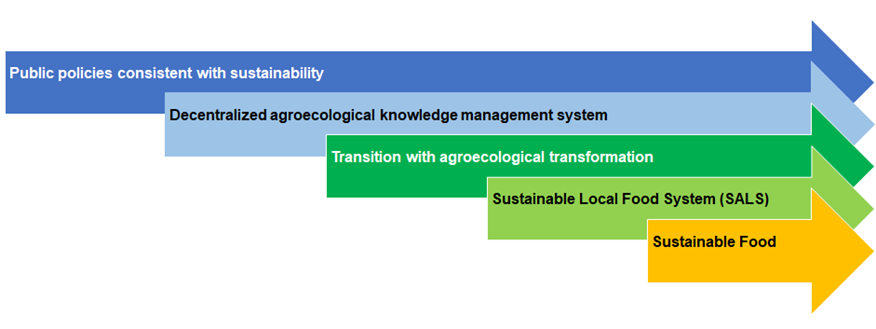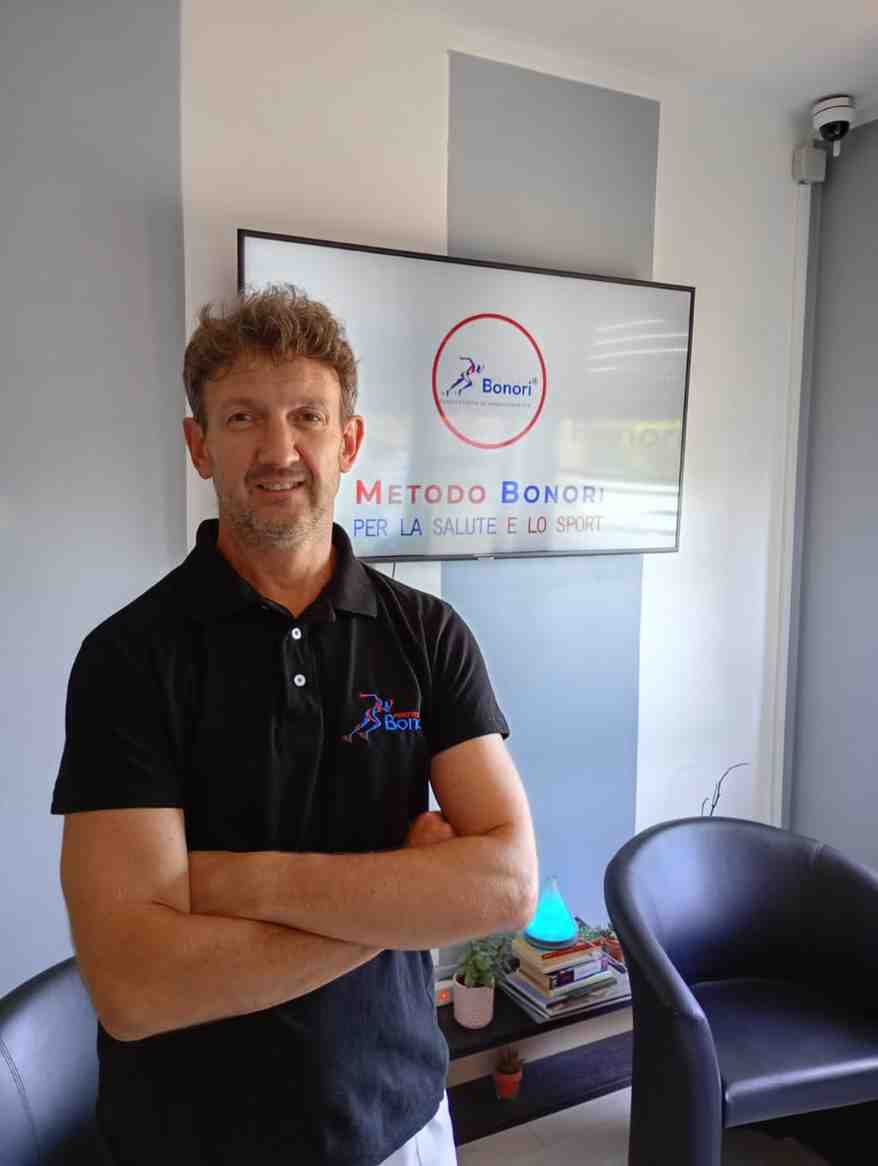AUCTORES
Globalize your Research
Review Article | DOI: https://doi.org/10.31579/2768-0487/128
Research Associate from Cuba.
*Corresponding Author: Luis L. Vázquez. Research Associate from Cuba.
Citation: Luis L. Vázquez, (2024), Agroecological transition towards sustainable food. A human survival strategy, Journal of Clinical and Laboratory Research, 7(3); DOI:10.31579/2768-0487/128
Copyright: © 2024, Vázquez LL. This is an open-access article distributed under the terms of the Creative Commons Attribution License, which permits unrestricted use, distribution, and reproduction in any medium, provided the original author and source are credited.
Received: 05 February 2024 | Accepted: 20 February 2024 | Published: 29 February 2024
Keywords:
With the rise of Agroecology, a dynamic of participatory research is occurring that influences the reconfiguration of food attributes. The route of Agroecology at the scale of the local food system converges on high security and sovereignty in food management, which influences personal and social perception regarding sustainable food.
The predominant agricultural production model, whose main characteristic is hyper-technology to achieve higher crop yields, is based on the use of massive doses of inputs: fossil fuels, pesticides, fertilizers, hybrid seeds, machinery, water for irrigation and continues a long list. However, this agricultural model failed to solve the problem of hunger in the world population, because there are currently 800 million hungry people, according to the report “The state of food security and nutrition in the world 2020” (FAO 2020).
At the same time that the unsustainability of the globalized food system is denounced, it seeks to reduce its influence, support processes of resistance and propose elements to redesign food systems so that they can achieve ecological, economic and social sustainability of all their components: production, processing , distribution and consumption (Gliessman 2016), in order to provide the population with healthy food without degrading the natural resource base and at the same time addressing broader aspects of sustainable rural development such as governance, solidarity markets, access to livelihoods, family planning, management of production systems, reduction of shrinkage and waste, among others (González de Molina and Simón 2010).
The literature classifies the motivations for the consumption of ecological products into: personal good and social good (Bravo et al 2013). In the first case, the individual consumes organic foods to satisfy his or her personal needs; while, in the second he does it to support social or environmental causes. In practice, the consumption of organic products is mainly motivated by reasons of health and environmental conservation and to a lesser extent by support for local producers and well-being (Kvakkestad et al 2017).
What and how much we eat directly influences what and how much is produced, and it is necessary to encourage diets that are good for both health and the planet, as well as to send convincing messages to the consumer (Drewnowski 2015). A radical transformation of the system is urgently needed and food is the most powerful tool to optimize the health of people and the planet (Willet et al 2019).
In fact, the feeding of human populations has gone from the collection of fresh vegetables in nature, to specialized production in large monoculture extensions, with high mechanization and use of agrochemicals; that is, from natural foods to those manipulated through different technological processes. The latter have become a few basic products, whose negative effects are well known, due to prolonged exposure over many generations to a low diversity of foods and their associated microbiota, which is why nutrition and immunity functions have been reduced naturally in the human microbiota (Vázquez 2022a).
Precisely, in the face of the crises generated by the negative externalities of modernity and its impacts on human survival, this article shares some clues that Agroecology offers to move towards sustainable food.
Attributes of sustainable eating
Regarding the acquisition and consumption of fresh agricultural products, five characteristics predominate in the personal and social behavior of the majority of the population: supply, quantity, size, appearance and access; Although, there are sectors of the population and places where they also consider that they are free of chemical substances and have nutritional value, attributes that have been promoted by organic agriculture; This agricultural production model has also contributed to the perception of the safety of raw materials and additives used in processed products. Recently, based on the experience of the pandemic caused by Covid-19, the population also considers the biosafety of livestock products, whether live animals or their products.
When deciding what food to purchase, the consumer takes four factors into account: i) the availability and real-time supply of food, which in turn depends on the presence of physical spaces where she can get it, either because she produced it herself or himself, bought them or exchanged them, ii) the purchasing power he has to buy those foods that results from the balance between the monetary income he has and the prices of foods, iii) the desire and acceptability that he feels for certain foods, which results from cultural norms, traditions, personal preferences and even effects of advertising and marketing, and iv) the assessment of the quality and safety of these foods, for which different variables are used such as color, size, the ingredients used in the food. they make up, the degree of decomposition, the possibility of contamination, etc. (HLPE 2017).
| Attributes | References |
| Primary production | |
| Fresh products obtained in agroecological production systems (values on the ways in which the products are obtained) | FAO (2020) |
| Production systems adapted to local characteristics (landscape, biodiversity, socioeconomics, customs) | FAO/INRA (2018), Vazquez 2018) |
| Production system with traditional agroforestry design (semi-natural function). Synergies that promote ecological interactions | Vázquez (2922b) |
| Integration of traditional varieties and races | FAO/INRA (2018) |
| Integration of crop nutrition and health with soil improvement | FAO/INRA (2018) |
| Reduce, reuse, recycle waste (byproducts) | FAO (2020) |
| Co-responsibility implies that jobs are truly shared by men and women | Zaragoza Ayuntamiento (2019) |
| Obtain fresh fruits, leafy vegetables and other products around the home (semi-natural) | |
| Post production | |
| Post-production process (hauling, transportation, storage, processing, marketing) biosafety (does not carry diseases to people) | HLPE (2017) |
| Access to products at fairs where a diversity of farmers and products attend | Calcina et al (2021) |
| Access to local products | FAO (2020) |
| Responsible business relations based on dialogue, respect and transparency and solidarity | Castillo (2020) |
| Proximity channels. Local-regional short marketing channels (CCC). Agri-food network | De la Cruz et al (2017) |
| Co-participants. Share information, positions and opinions. Collectively shape the System | De la Cruz et al (2017) |
| Acquisition attitude | |
| Consumption of local products that reduces the environmental impact related to production and transportation | FAO (2020) |
| Buy agroecological products as a personal and social ethic (healthier than conventional ones; that is, aspects such as environmental awareness, equity, support for small producers, among others, do not seem to be incentives to opt for organic products) | Vaco et al (2015) |
| Proximity consumption is that which is based on the construction of relationships of closeness and trust between producers and consumers, on short and proximity marketing circuits, as well as on criteria related to the temporality, seasonality and freshness of food. | Zaragoza Ayuntamiento (2019) |
| Form and participate in networks or groups of informed, critical and responsible consumers, who assume consumption as a political citizen act. | Chaparro-Africano et al (2023) |
| The participation of the different actors involved in the local food system in the co-production of public policies, allows not only to increase the legitimacy of the policies thus created, but above all - and especially - to take advantage of and operationalize the great wealth and creativity that the exchange of points of view, needs, knowledge and social experiences present in our city; in addition to combining the action and mobilization of available public and social resources and, in general, developing efficient and operational public policies. | Zaragoza Ayuntamiento (2019) |
| Feeding attitude | |
| Fresh products free of residues of agrochemicals, toxins and other harmful substances | Chaparro-Africano et al (2023), FAO/INRA (2018), HLPE (2017) |
| Organoleptic quality (smell, color, flavor). Responsibility when purchasing and choosing more nutritious and sustainable options | Chaparro-Africano et al (2023), FAO (2020) |
| Diet containing adequate food energy, micro- and macronutrients sufficient to sustain life, support individual activities, and maintain a healthy body weight. Balanced bioavailability of nutrients. | FAO (2020), HLPE (2017), Willett et al (2019) |
| Consumption of unprocessed or minimally processed foods | FAO (2020), Vazquez (2018) |
| Consumption of seasonal foods | FAO (2020), Vazquez (2018) |
| Clean and safe drinking water as a reference drink and responsible use | FAO (2020), Vazquez (2018) |
| Respect for local culture, culinary practices, knowledge and consumption patterns | FAO (2020), Vazquez (2018) |
Table 1: Attributes of sustainable nutrition*.
(*). Construidos desde referencias consultadas, validadas mediante intercambios sostenidos con investigadores y agricultores.
Diets include all the foods and beverages consumed by a person, while dietary habits include the quantities, proportions and combinations of different foods and beverages and the frequency of their consumption. Both are an expression of eating behaviors and respond to cultural and biophysical contexts (HLPE 2017). They directly determine the nutritional status of individuals, in such a way that healthy diets and habits are intended to satisfy the energy and nutritional needs necessary for each individual according to their age, sex, habits and activities, while avoiding practices and products generate diseases and nutritional deficiencies (FAO 2011).
Sustainable diets have low environmental impact, which contribute to food and nutritional security and healthy lives for present and future generations. They contribute to the protection and respect of biodiversity and ecosystems, are culturally acceptable, economically fair, accessible, affordable, nutritionally adequate, safe and healthy, and allow the optimization of natural and human resources (FAO 2010).
In the future, food will not only allow optimal growth and development from pregnancy and in all stages of life, but will also enhance physical and mental capacities, as well as reduce the risk of disease (Koletzko et al 1998), because billions of microorganisms inhabit the human body and influence its development, physiology, immunity, and nutrition (Bengmark 2001).
In the search for a healthy diet, the redesign of food production systems under the principles of Agroecology, facilitates the functional interactions of biodiversity that contribute to its capacity for ecological self-regulation and that of the intestinal ecosystem of the people who consume said foods foods (Vázquez 2022a).
Agroecological markets, as a commitment to the promotion of agroecology, are short marketing circuits that establish relationships between consumers and producers, different from those that exist in conventional markets, through the development of local models that respond to a territorial context and reduce the intermediation (Ministry of Agriculture and Livestock, Aquaculture and Fisheries of Ecuador 2015).
In Mexico, short marketing circuits for food security are based on the direct sale of fresh and seasonal products, with minimal intermediation. They are characterized by geographical proximity, the participation of family and artisanal economy units and reduction of the food value chain, creating more trust, integration and coordination to achieve the common vision and develop innovation and sustainability processes (Martínez et al 2021).
The greater distance between producers and consumers has generated a growing food disaffection, that is, a social process marked by citizen distrust towards the products offered by the system, mass-produced, standardized, anonymous, delocalized, harmful (potentially carcinogenic and allergens). such as colorants, preservatives and flavor enhancers) and toxic (with residues of antibiotics, hormones, pesticides and genetically modified organisms) (Soler and Calle 2010).
On the other hand, fair trade is the production-distribution-consumption commercial network oriented towards a supportive and sustainable development that benefits excluded or disadvantaged producers, promoting better economic, social, political, cultural, environmental and ethical conditions in this process (Cotera and Ortiz 2004). When the producer realizes that the consumer is his best ally, the value of the link becomes more virtuous (Caracciolo 2013).
In this sense, sustainable gastronomy is also promoted, as that which takes care of its essential resources, assuming responsibility for the future impacts of what we do today; including impacts on natural resources and ecosystems, as well as impacts on the values, ideals and well-being of our society in the future. It is protecting our resources today to ensure our wealth forever. It is being aware that only by taking the necessary care can we enjoy the enormous natural and cultural wealth and diversity that we are lucky to have (Buitrago and Chitiva 2024).
Without a doubt, the psycho-social nature of food invites “commensality” and exchange within the family group. It is the act that completes the cycle, in which emotional values and the maintenance of communication and family traditions are consolidated (Vázquez 2018).
In fact, healthy and sustainable eating is a dietary pattern that promotes all dimensions of people's health and well-being, with low pressure and environmental impact, accessible, affordable, safe, equitable and culturally accepted. It allows the optimal growth and development of people at all stages of their lives, both present and future generations, contributing to the prevention of malnutrition in all its forms and the reduction of the risk of suffering from non-toxic diseases. transmissible (FAO 2020).
Agroecology route for food sustainability
Currently, agroecology is considered an area of knowledge and praxis that addresses broad issues inherent to the socio-environmental complexity of the countryside, such as food security and sovereignty, decentralization of profits and the market, local self-determination, transfer of technology and elements. similar development and governance systems (Anderson et al. 2019).
In this sense, the debate on food systems has been rising from agroecology, which especially investigates markets and alternative agroecological food networks and their potential to generate transformative or transitional itineraries towards the sustainable development of societies (FAO/INRA 2018). , with small agroecological producers as main actors, who in the case of Latin America have stood out for their extensive participation in providing a good part of the commercial supply of organic products in their countries (FIBL/INFOAM 2017, Valencia et al 2019).
Eating behavior is the set of individual and household choices and decisions about what foods are acquired, stored, prepared, cooked and consumed, how, where, when and by whom, and the distribution of food in the family (according to sex, age or particular condition such as pregnancy or illness), observed through actions, habits, routines and strategies around eating at different times (Poisot 2021).
In fact, food, as a need and attitude of people, has moved in accordance with the advances and perceptions established in different eras; Of course, after World War II the change has been significant, because agricultural and livestock production intensified with high use of technical products of chemical synthesis, fossil energy and heavy machinery, complemented by industrial development for processing and production. transformation of fresh products, unleashing global supply chains that privileged the criteria of quality, flavor and presentation, establishing a conventional food culture with various negative influences.
As an alternative, organic agriculture emerged, which led to primary production and post-production with authorized technical products, incorporating the criteria of safety and proximity, whose specialized markets demanded the certification of products as organic. Organic agriculture itself evolved, under the influence of traditional peasant agriculture, permaculture and the agroecological transition, which together are influencing a new change in the perception of food, which demands participatory certification of primary production systems and post-production to consolidate sustainable food.
From this perspective, regardless of the state of sustainability of the food system, the Agroecology route proposes the need to have public policies consistent with sustainability, which are supported by decentralized agroecological knowledge management systems, as a legal framework. , theoretical and methodological that facilitates the transformation of the conventional food system and converges with the territorialization of Agroecology (Figure 1) at the scale of the local food system, which guarantees high security and sovereignty in food management and influences the perception personal and social regarding sustainable food.

Figure 1: Agroecology Route for food sustainability. Validated in a preparation workshop for the implementation of the Agroecology Policy. Havana, January 31-February 1, 2024.
The food system can be defined as the set of socioeconomic relationships that directly affect the production and distribution processes of agri-food products, to satisfactorily fulfill the social function of food-nutrition with safe or safe foods (Malassis 1979).
In this way, it has been studied how different experiences are incubated and developed, where the improvements introduced in the processes of production and technological innovation, distribution, marketing and consumption create synergy to enhance the capacities of articulation and expansion of said networks, from a rationality. human-reproductive (Pérez 2015), as well as the importance that the transversal collaboration of producers, consumers, NGOs, academics and members of civil society has in its formation (Ferguson et al 2009).
The different agroecological marketing efforts include: fairs, stores, community baskets, restaurants, catering, and other alternative forms of marketing such as tourist educational farms and workshops, where the supply of agroecological foods is wide (Heifer 2014) and food markets. the land of the Slow Food movement (Saucedo et al 2023), among others.
Sustainable quality of life, although it is a highly complex socioeconomic challenge for health systems, can be considered one of the priorities for the survival of human populations. It is a holistic approach to health conservation, which is particularly different in urban, peri-urban and rural systems, where factors that determine the quality of the habitat, healthy eating and natural medication converge (Vázquez 2022b).
Food practices can be influenced by larger scale processes such as globalization, economic development programs and rural infrastructure, educational programs, cultural and religious processes, advertising and entertainment, or demographic processes such as urbanization and migration, to mention some. They constitute a key level to act and establish more sustainable food systems since interventions in food practices (with new information, incentives, nutritional education or dietary guidelines) allow influencing the agency of the actors as consumers and generating new eating habits that in turn perhaps reorganize the food system (HLPE 2017).
Considering the tangible and intangible assets of family farming and the territorial dynamics in which they deploy their social reproduction strategies, privileging the regional over the global, are the starting point for the construction of territorial food systems (Santos 1996).
Clearly Auctoresonline and particularly Psychology and Mental Health Care Journal is dedicated to improving health care services for individuals and populations. The editorial boards' ability to efficiently recognize and share the global importance of health literacy with a variety of stakeholders. Auctoresonline publishing platform can be used to facilitate of optimal client-based services and should be added to health care professionals' repertoire of evidence-based health care resources.

Journal of Clinical Cardiology and Cardiovascular Intervention The submission and review process was adequate. However I think that the publication total value should have been enlightened in early fases. Thank you for all.

Journal of Women Health Care and Issues By the present mail, I want to say thank to you and tour colleagues for facilitating my published article. Specially thank you for the peer review process, support from the editorial office. I appreciate positively the quality of your journal.
Journal of Clinical Research and Reports I would be very delighted to submit my testimonial regarding the reviewer board and the editorial office. The reviewer board were accurate and helpful regarding any modifications for my manuscript. And the editorial office were very helpful and supportive in contacting and monitoring with any update and offering help. It was my pleasure to contribute with your promising Journal and I am looking forward for more collaboration.

We would like to thank the Journal of Thoracic Disease and Cardiothoracic Surgery because of the services they provided us for our articles. The peer-review process was done in a very excellent time manner, and the opinions of the reviewers helped us to improve our manuscript further. The editorial office had an outstanding correspondence with us and guided us in many ways. During a hard time of the pandemic that is affecting every one of us tremendously, the editorial office helped us make everything easier for publishing scientific work. Hope for a more scientific relationship with your Journal.

The peer-review process which consisted high quality queries on the paper. I did answer six reviewers’ questions and comments before the paper was accepted. The support from the editorial office is excellent.

Journal of Neuroscience and Neurological Surgery. I had the experience of publishing a research article recently. The whole process was simple from submission to publication. The reviewers made specific and valuable recommendations and corrections that improved the quality of my publication. I strongly recommend this Journal.

Dr. Katarzyna Byczkowska My testimonial covering: "The peer review process is quick and effective. The support from the editorial office is very professional and friendly. Quality of the Clinical Cardiology and Cardiovascular Interventions is scientific and publishes ground-breaking research on cardiology that is useful for other professionals in the field.

Thank you most sincerely, with regard to the support you have given in relation to the reviewing process and the processing of my article entitled "Large Cell Neuroendocrine Carcinoma of The Prostate Gland: A Review and Update" for publication in your esteemed Journal, Journal of Cancer Research and Cellular Therapeutics". The editorial team has been very supportive.

Testimony of Journal of Clinical Otorhinolaryngology: work with your Reviews has been a educational and constructive experience. The editorial office were very helpful and supportive. It was a pleasure to contribute to your Journal.

Dr. Bernard Terkimbi Utoo, I am happy to publish my scientific work in Journal of Women Health Care and Issues (JWHCI). The manuscript submission was seamless and peer review process was top notch. I was amazed that 4 reviewers worked on the manuscript which made it a highly technical, standard and excellent quality paper. I appreciate the format and consideration for the APC as well as the speed of publication. It is my pleasure to continue with this scientific relationship with the esteem JWHCI.

This is an acknowledgment for peer reviewers, editorial board of Journal of Clinical Research and Reports. They show a lot of consideration for us as publishers for our research article “Evaluation of the different factors associated with side effects of COVID-19 vaccination on medical students, Mutah university, Al-Karak, Jordan”, in a very professional and easy way. This journal is one of outstanding medical journal.
Dear Hao Jiang, to Journal of Nutrition and Food Processing We greatly appreciate the efficient, professional and rapid processing of our paper by your team. If there is anything else we should do, please do not hesitate to let us know. On behalf of my co-authors, we would like to express our great appreciation to editor and reviewers.

As an author who has recently published in the journal "Brain and Neurological Disorders". I am delighted to provide a testimonial on the peer review process, editorial office support, and the overall quality of the journal. The peer review process at Brain and Neurological Disorders is rigorous and meticulous, ensuring that only high-quality, evidence-based research is published. The reviewers are experts in their fields, and their comments and suggestions were constructive and helped improve the quality of my manuscript. The review process was timely and efficient, with clear communication from the editorial office at each stage. The support from the editorial office was exceptional throughout the entire process. The editorial staff was responsive, professional, and always willing to help. They provided valuable guidance on formatting, structure, and ethical considerations, making the submission process seamless. Moreover, they kept me informed about the status of my manuscript and provided timely updates, which made the process less stressful. The journal Brain and Neurological Disorders is of the highest quality, with a strong focus on publishing cutting-edge research in the field of neurology. The articles published in this journal are well-researched, rigorously peer-reviewed, and written by experts in the field. The journal maintains high standards, ensuring that readers are provided with the most up-to-date and reliable information on brain and neurological disorders. In conclusion, I had a wonderful experience publishing in Brain and Neurological Disorders. The peer review process was thorough, the editorial office provided exceptional support, and the journal's quality is second to none. I would highly recommend this journal to any researcher working in the field of neurology and brain disorders.

Dear Agrippa Hilda, Journal of Neuroscience and Neurological Surgery, Editorial Coordinator, I trust this message finds you well. I want to extend my appreciation for considering my article for publication in your esteemed journal. I am pleased to provide a testimonial regarding the peer review process and the support received from your editorial office. The peer review process for my paper was carried out in a highly professional and thorough manner. The feedback and comments provided by the authors were constructive and very useful in improving the quality of the manuscript. This rigorous assessment process undoubtedly contributes to the high standards maintained by your journal.

International Journal of Clinical Case Reports and Reviews. I strongly recommend to consider submitting your work to this high-quality journal. The support and availability of the Editorial staff is outstanding and the review process was both efficient and rigorous.

Thank you very much for publishing my Research Article titled “Comparing Treatment Outcome Of Allergic Rhinitis Patients After Using Fluticasone Nasal Spray And Nasal Douching" in the Journal of Clinical Otorhinolaryngology. As Medical Professionals we are immensely benefited from study of various informative Articles and Papers published in this high quality Journal. I look forward to enriching my knowledge by regular study of the Journal and contribute my future work in the field of ENT through the Journal for use by the medical fraternity. The support from the Editorial office was excellent and very prompt. I also welcome the comments received from the readers of my Research Article.

Dear Erica Kelsey, Editorial Coordinator of Cancer Research and Cellular Therapeutics Our team is very satisfied with the processing of our paper by your journal. That was fast, efficient, rigorous, but without unnecessary complications. We appreciated the very short time between the submission of the paper and its publication on line on your site.

I am very glad to say that the peer review process is very successful and fast and support from the Editorial Office. Therefore, I would like to continue our scientific relationship for a long time. And I especially thank you for your kindly attention towards my article. Have a good day!

"We recently published an article entitled “Influence of beta-Cyclodextrins upon the Degradation of Carbofuran Derivatives under Alkaline Conditions" in the Journal of “Pesticides and Biofertilizers” to show that the cyclodextrins protect the carbamates increasing their half-life time in the presence of basic conditions This will be very helpful to understand carbofuran behaviour in the analytical, agro-environmental and food areas. We greatly appreciated the interaction with the editor and the editorial team; we were particularly well accompanied during the course of the revision process, since all various steps towards publication were short and without delay".

I would like to express my gratitude towards you process of article review and submission. I found this to be very fair and expedient. Your follow up has been excellent. I have many publications in national and international journal and your process has been one of the best so far. Keep up the great work.

We are grateful for this opportunity to provide a glowing recommendation to the Journal of Psychiatry and Psychotherapy. We found that the editorial team were very supportive, helpful, kept us abreast of timelines and over all very professional in nature. The peer review process was rigorous, efficient and constructive that really enhanced our article submission. The experience with this journal remains one of our best ever and we look forward to providing future submissions in the near future.

I am very pleased to serve as EBM of the journal, I hope many years of my experience in stem cells can help the journal from one way or another. As we know, stem cells hold great potential for regenerative medicine, which are mostly used to promote the repair response of diseased, dysfunctional or injured tissue using stem cells or their derivatives. I think Stem Cell Research and Therapeutics International is a great platform to publish and share the understanding towards the biology and translational or clinical application of stem cells.

I would like to give my testimony in the support I have got by the peer review process and to support the editorial office where they were of asset to support young author like me to be encouraged to publish their work in your respected journal and globalize and share knowledge across the globe. I really give my great gratitude to your journal and the peer review including the editorial office.

I am delighted to publish our manuscript entitled "A Perspective on Cocaine Induced Stroke - Its Mechanisms and Management" in the Journal of Neuroscience and Neurological Surgery. The peer review process, support from the editorial office, and quality of the journal are excellent. The manuscripts published are of high quality and of excellent scientific value. I recommend this journal very much to colleagues.

Dr.Tania Muñoz, My experience as researcher and author of a review article in The Journal Clinical Cardiology and Interventions has been very enriching and stimulating. The editorial team is excellent, performs its work with absolute responsibility and delivery. They are proactive, dynamic and receptive to all proposals. Supporting at all times the vast universe of authors who choose them as an option for publication. The team of review specialists, members of the editorial board, are brilliant professionals, with remarkable performance in medical research and scientific methodology. Together they form a frontline team that consolidates the JCCI as a magnificent option for the publication and review of high-level medical articles and broad collective interest. I am honored to be able to share my review article and open to receive all your comments.

“The peer review process of JPMHC is quick and effective. Authors are benefited by good and professional reviewers with huge experience in the field of psychology and mental health. The support from the editorial office is very professional. People to contact to are friendly and happy to help and assist any query authors might have. Quality of the Journal is scientific and publishes ground-breaking research on mental health that is useful for other professionals in the field”.

Dear editorial department: On behalf of our team, I hereby certify the reliability and superiority of the International Journal of Clinical Case Reports and Reviews in the peer review process, editorial support, and journal quality. Firstly, the peer review process of the International Journal of Clinical Case Reports and Reviews is rigorous, fair, transparent, fast, and of high quality. The editorial department invites experts from relevant fields as anonymous reviewers to review all submitted manuscripts. These experts have rich academic backgrounds and experience, and can accurately evaluate the academic quality, originality, and suitability of manuscripts. The editorial department is committed to ensuring the rigor of the peer review process, while also making every effort to ensure a fast review cycle to meet the needs of authors and the academic community. Secondly, the editorial team of the International Journal of Clinical Case Reports and Reviews is composed of a group of senior scholars and professionals with rich experience and professional knowledge in related fields. The editorial department is committed to assisting authors in improving their manuscripts, ensuring their academic accuracy, clarity, and completeness. Editors actively collaborate with authors, providing useful suggestions and feedback to promote the improvement and development of the manuscript. We believe that the support of the editorial department is one of the key factors in ensuring the quality of the journal. Finally, the International Journal of Clinical Case Reports and Reviews is renowned for its high- quality articles and strict academic standards. The editorial department is committed to publishing innovative and academically valuable research results to promote the development and progress of related fields. The International Journal of Clinical Case Reports and Reviews is reasonably priced and ensures excellent service and quality ratio, allowing authors to obtain high-level academic publishing opportunities in an affordable manner. I hereby solemnly declare that the International Journal of Clinical Case Reports and Reviews has a high level of credibility and superiority in terms of peer review process, editorial support, reasonable fees, and journal quality. Sincerely, Rui Tao.

Clinical Cardiology and Cardiovascular Interventions I testity the covering of the peer review process, support from the editorial office, and quality of the journal.

Clinical Cardiology and Cardiovascular Interventions, we deeply appreciate the interest shown in our work and its publication. It has been a true pleasure to collaborate with you. The peer review process, as well as the support provided by the editorial office, have been exceptional, and the quality of the journal is very high, which was a determining factor in our decision to publish with you.
The peer reviewers process is quick and effective, the supports from editorial office is excellent, the quality of journal is high. I would like to collabroate with Internatioanl journal of Clinical Case Reports and Reviews journal clinically in the future time.

Clinical Cardiology and Cardiovascular Interventions, I would like to express my sincerest gratitude for the trust placed in our team for the publication in your journal. It has been a true pleasure to collaborate with you on this project. I am pleased to inform you that both the peer review process and the attention from the editorial coordination have been excellent. Your team has worked with dedication and professionalism to ensure that your publication meets the highest standards of quality. We are confident that this collaboration will result in mutual success, and we are eager to see the fruits of this shared effort.

Dear Dr. Jessica Magne, Editorial Coordinator 0f Clinical Cardiology and Cardiovascular Interventions, I hope this message finds you well. I want to express my utmost gratitude for your excellent work and for the dedication and speed in the publication process of my article titled "Navigating Innovation: Qualitative Insights on Using Technology for Health Education in Acute Coronary Syndrome Patients." I am very satisfied with the peer review process, the support from the editorial office, and the quality of the journal. I hope we can maintain our scientific relationship in the long term.
Dear Monica Gissare, - Editorial Coordinator of Nutrition and Food Processing. ¨My testimony with you is truly professional, with a positive response regarding the follow-up of the article and its review, you took into account my qualities and the importance of the topic¨.

Dear Dr. Jessica Magne, Editorial Coordinator 0f Clinical Cardiology and Cardiovascular Interventions, The review process for the article “The Handling of Anti-aggregants and Anticoagulants in the Oncologic Heart Patient Submitted to Surgery” was extremely rigorous and detailed. From the initial submission to the final acceptance, the editorial team at the “Journal of Clinical Cardiology and Cardiovascular Interventions” demonstrated a high level of professionalism and dedication. The reviewers provided constructive and detailed feedback, which was essential for improving the quality of our work. Communication was always clear and efficient, ensuring that all our questions were promptly addressed. The quality of the “Journal of Clinical Cardiology and Cardiovascular Interventions” is undeniable. It is a peer-reviewed, open-access publication dedicated exclusively to disseminating high-quality research in the field of clinical cardiology and cardiovascular interventions. The journal's impact factor is currently under evaluation, and it is indexed in reputable databases, which further reinforces its credibility and relevance in the scientific field. I highly recommend this journal to researchers looking for a reputable platform to publish their studies.

Dear Editorial Coordinator of the Journal of Nutrition and Food Processing! "I would like to thank the Journal of Nutrition and Food Processing for including and publishing my article. The peer review process was very quick, movement and precise. The Editorial Board has done an extremely conscientious job with much help, valuable comments and advices. I find the journal very valuable from a professional point of view, thank you very much for allowing me to be part of it and I would like to participate in the future!”

Dealing with The Journal of Neurology and Neurological Surgery was very smooth and comprehensive. The office staff took time to address my needs and the response from editors and the office was prompt and fair. I certainly hope to publish with this journal again.Their professionalism is apparent and more than satisfactory. Susan Weiner

My Testimonial Covering as fellowing: Lin-Show Chin. The peer reviewers process is quick and effective, the supports from editorial office is excellent, the quality of journal is high. I would like to collabroate with Internatioanl journal of Clinical Case Reports and Reviews.

My experience publishing in Psychology and Mental Health Care was exceptional. The peer review process was rigorous and constructive, with reviewers providing valuable insights that helped enhance the quality of our work. The editorial team was highly supportive and responsive, making the submission process smooth and efficient. The journal's commitment to high standards and academic rigor makes it a respected platform for quality research. I am grateful for the opportunity to publish in such a reputable journal.
My experience publishing in International Journal of Clinical Case Reports and Reviews was exceptional. I Come forth to Provide a Testimonial Covering the Peer Review Process and the editorial office for the Professional and Impartial Evaluation of the Manuscript.

I would like to offer my testimony in the support. I have received through the peer review process and support the editorial office where they are to support young authors like me, encourage them to publish their work in your esteemed journals, and globalize and share knowledge globally. I really appreciate your journal, peer review, and editorial office.
Dear Agrippa Hilda- Editorial Coordinator of Journal of Neuroscience and Neurological Surgery, "The peer review process was very quick and of high quality, which can also be seen in the articles in the journal. The collaboration with the editorial office was very good."

I would like to express my sincere gratitude for the support and efficiency provided by the editorial office throughout the publication process of my article, “Delayed Vulvar Metastases from Rectal Carcinoma: A Case Report.” I greatly appreciate the assistance and guidance I received from your team, which made the entire process smooth and efficient. The peer review process was thorough and constructive, contributing to the overall quality of the final article. I am very grateful for the high level of professionalism and commitment shown by the editorial staff, and I look forward to maintaining a long-term collaboration with the International Journal of Clinical Case Reports and Reviews.
To Dear Erin Aust, I would like to express my heartfelt appreciation for the opportunity to have my work published in this esteemed journal. The entire publication process was smooth and well-organized, and I am extremely satisfied with the final result. The Editorial Team demonstrated the utmost professionalism, providing prompt and insightful feedback throughout the review process. Their clear communication and constructive suggestions were invaluable in enhancing my manuscript, and their meticulous attention to detail and dedication to quality are truly commendable. Additionally, the support from the Editorial Office was exceptional. From the initial submission to the final publication, I was guided through every step of the process with great care and professionalism. The team's responsiveness and assistance made the entire experience both easy and stress-free. I am also deeply impressed by the quality and reputation of the journal. It is an honor to have my research featured in such a respected publication, and I am confident that it will make a meaningful contribution to the field.

"I am grateful for the opportunity of contributing to [International Journal of Clinical Case Reports and Reviews] and for the rigorous review process that enhances the quality of research published in your esteemed journal. I sincerely appreciate the time and effort of your team who have dedicatedly helped me in improvising changes and modifying my manuscript. The insightful comments and constructive feedback provided have been invaluable in refining and strengthening my work".

I thank the ‘Journal of Clinical Research and Reports’ for accepting this article for publication. This is a rigorously peer reviewed journal which is on all major global scientific data bases. I note the review process was prompt, thorough and professionally critical. It gave us an insight into a number of important scientific/statistical issues. The review prompted us to review the relevant literature again and look at the limitations of the study. The peer reviewers were open, clear in the instructions and the editorial team was very prompt in their communication. This journal certainly publishes quality research articles. I would recommend the journal for any future publications.

Dear Jessica Magne, with gratitude for the joint work. Fast process of receiving and processing the submitted scientific materials in “Clinical Cardiology and Cardiovascular Interventions”. High level of competence of the editors with clear and correct recommendations and ideas for enriching the article.

We found the peer review process quick and positive in its input. The support from the editorial officer has been very agile, always with the intention of improving the article and taking into account our subsequent corrections.

My article, titled 'No Way Out of the Smartphone Epidemic Without Considering the Insights of Brain Research,' has been republished in the International Journal of Clinical Case Reports and Reviews. The review process was seamless and professional, with the editors being both friendly and supportive. I am deeply grateful for their efforts.
To Dear Erin Aust – Editorial Coordinator of Journal of General Medicine and Clinical Practice! I declare that I am absolutely satisfied with your work carried out with great competence in following the manuscript during the various stages from its receipt, during the revision process to the final acceptance for publication. Thank Prof. Elvira Farina

Dear Jessica, and the super professional team of the ‘Clinical Cardiology and Cardiovascular Interventions’ I am sincerely grateful to the coordinated work of the journal team for the no problem with the submission of my manuscript: “Cardiometabolic Disorders in A Pregnant Woman with Severe Preeclampsia on the Background of Morbid Obesity (Case Report).” The review process by 5 experts was fast, and the comments were professional, which made it more specific and academic, and the process of publication and presentation of the article was excellent. I recommend that my colleagues publish articles in this journal, and I am interested in further scientific cooperation. Sincerely and best wishes, Dr. Oleg Golyanovskiy.

Dear Ashley Rosa, Editorial Coordinator of the journal - Psychology and Mental Health Care. " The process of obtaining publication of my article in the Psychology and Mental Health Journal was positive in all areas. The peer review process resulted in a number of valuable comments, the editorial process was collaborative and timely, and the quality of this journal has been quickly noticed, resulting in alternative journals contacting me to publish with them." Warm regards, Susan Anne Smith, PhD. Australian Breastfeeding Association.

Dear Jessica Magne, Editorial Coordinator, Clinical Cardiology and Cardiovascular Interventions, Auctores Publishing LLC. I appreciate the journal (JCCI) editorial office support, the entire team leads were always ready to help, not only on technical front but also on thorough process. Also, I should thank dear reviewers’ attention to detail and creative approach to teach me and bring new insights by their comments. Surely, more discussions and introduction of other hemodynamic devices would provide better prevention and management of shock states. Your efforts and dedication in presenting educational materials in this journal are commendable. Best wishes from, Farahnaz Fallahian.
Dear Maria Emerson, Editorial Coordinator, International Journal of Clinical Case Reports and Reviews, Auctores Publishing LLC. I am delighted to have published our manuscript, "Acute Colonic Pseudo-Obstruction (ACPO): A rare but serious complication following caesarean section." I want to thank the editorial team, especially Maria Emerson, for their prompt review of the manuscript, quick responses to queries, and overall support. Yours sincerely Dr. Victor Olagundoye.

Dear Ashley Rosa, Editorial Coordinator, International Journal of Clinical Case Reports and Reviews. Many thanks for publishing this manuscript after I lost confidence the editors were most helpful, more than other journals Best wishes from, Susan Anne Smith, PhD. Australian Breastfeeding Association.

Dear Agrippa Hilda, Editorial Coordinator, Journal of Neuroscience and Neurological Surgery. The entire process including article submission, review, revision, and publication was extremely easy. The journal editor was prompt and helpful, and the reviewers contributed to the quality of the paper. Thank you so much! Eric Nussbaum, MD
Dr Hala Al Shaikh This is to acknowledge that the peer review process for the article ’ A Novel Gnrh1 Gene Mutation in Four Omani Male Siblings, Presentation and Management ’ sent to the International Journal of Clinical Case Reports and Reviews was quick and smooth. The editorial office was prompt with easy communication.

Dear Erin Aust, Editorial Coordinator, Journal of General Medicine and Clinical Practice. We are pleased to share our experience with the “Journal of General Medicine and Clinical Practice”, following the successful publication of our article. The peer review process was thorough and constructive, helping to improve the clarity and quality of the manuscript. We are especially thankful to Ms. Erin Aust, the Editorial Coordinator, for her prompt communication and continuous support throughout the process. Her professionalism ensured a smooth and efficient publication experience. The journal upholds high editorial standards, and we highly recommend it to fellow researchers seeking a credible platform for their work. Best wishes By, Dr. Rakhi Mishra.

Dear Jessica Magne, Editorial Coordinator, Clinical Cardiology and Cardiovascular Interventions, Auctores Publishing LLC. The peer review process of the journal of Clinical Cardiology and Cardiovascular Interventions was excellent and fast, as was the support of the editorial office and the quality of the journal. Kind regards Walter F. Riesen Prof. Dr. Dr. h.c. Walter F. Riesen.

Dear Ashley Rosa, Editorial Coordinator, International Journal of Clinical Case Reports and Reviews, Auctores Publishing LLC. Thank you for publishing our article, Exploring Clozapine's Efficacy in Managing Aggression: A Multiple Single-Case Study in Forensic Psychiatry in the international journal of clinical case reports and reviews. We found the peer review process very professional and efficient. The comments were constructive, and the whole process was efficient. On behalf of the co-authors, I would like to thank you for publishing this article. With regards, Dr. Jelle R. Lettinga.

Dear Clarissa Eric, Editorial Coordinator, Journal of Clinical Case Reports and Studies, I would like to express my deep admiration for the exceptional professionalism demonstrated by your journal. I am thoroughly impressed by the speed of the editorial process, the substantive and insightful reviews, and the meticulous preparation of the manuscript for publication. Additionally, I greatly appreciate the courteous and immediate responses from your editorial office to all my inquiries. Best Regards, Dariusz Ziora

Dear Chrystine Mejia, Editorial Coordinator, Journal of Neurodegeneration and Neurorehabilitation, Auctores Publishing LLC, We would like to thank the editorial team for the smooth and high-quality communication leading up to the publication of our article in the Journal of Neurodegeneration and Neurorehabilitation. The reviewers have extensive knowledge in the field, and their relevant questions helped to add value to our publication. Kind regards, Dr. Ravi Shrivastava.

Dear Clarissa Eric, Editorial Coordinator, Journal of Clinical Case Reports and Studies, Auctores Publishing LLC, USA Office: +1-(302)-520-2644. I would like to express my sincere appreciation for the efficient and professional handling of my case report by the ‘Journal of Clinical Case Reports and Studies’. The peer review process was not only fast but also highly constructive—the reviewers’ comments were clear, relevant, and greatly helped me improve the quality and clarity of my manuscript. I also received excellent support from the editorial office throughout the process. Communication was smooth and timely, and I felt well guided at every stage, from submission to publication. The overall quality and rigor of the journal are truly commendable. I am pleased to have published my work with Journal of Clinical Case Reports and Studies, and I look forward to future opportunities for collaboration. Sincerely, Aline Tollet, UCLouvain.

Dear Ms. Mayra Duenas, Editorial Coordinator, International Journal of Clinical Case Reports and Reviews. “The International Journal of Clinical Case Reports and Reviews represented the “ideal house” to share with the research community a first experience with the use of the Simeox device for speech rehabilitation. High scientific reputation and attractive website communication were first determinants for the selection of this Journal, and the following submission process exceeded expectations: fast but highly professional peer review, great support by the editorial office, elegant graphic layout. Exactly what a dynamic research team - also composed by allied professionals - needs!" From, Chiara Beccaluva, PT - Italy.

Dear Maria Emerson, Editorial Coordinator, we have deeply appreciated the professionalism demonstrated by the International Journal of Clinical Case Reports and Reviews. The reviewers have extensive knowledge of our field and have been very efficient and fast in supporting the process. I am really looking forward to further collaboration. Thanks. Best regards, Dr. Claudio Ligresti
Dear Chrystine Mejia, Editorial Coordinator, Journal of Neurodegeneration and Neurorehabilitation. “The peer review process was efficient and constructive, and the editorial office provided excellent communication and support throughout. The journal ensures scientific rigor and high editorial standards, while also offering a smooth and timely publication process. We sincerely appreciate the work of the editorial team in facilitating the dissemination of innovative approaches such as the Bonori Method.” Best regards, Dr. Matteo Bonori.

I recommend without hesitation submitting relevant papers on medical decision making to the International Journal of Clinical Case Reports and Reviews. I am very grateful to the editorial staff. Maria Emerson was a pleasure to communicate with. The time from submission to publication was an extremely short 3 weeks. The editorial staff submitted the paper to three reviewers. Two of the reviewers commented positively on the value of publishing the paper. The editorial staff quickly recognized the third reviewer’s comments as an unjust attempt to reject the paper. I revised the paper as recommended by the first two reviewers.

Dear Maria Emerson, Editorial Coordinator, Journal of Clinical Research and Reports. Thank you for publishing our case report: "Clinical Case of Effective Fetal Stem Cells Treatment in a Patient with Autism Spectrum Disorder" within the "Journal of Clinical Research and Reports" being submitted by the team of EmCell doctors from Kyiv, Ukraine. We much appreciate a professional and transparent peer-review process from Auctores. All research Doctors are so grateful to your Editorial Office and Auctores Publishing support! I amiably wish our article publication maintained a top quality of your International Scientific Journal. My best wishes for a prosperity of the Journal of Clinical Research and Reports. Hope our scientific relationship and cooperation will remain long lasting. Thank you very much indeed. Kind regards, Dr. Andriy Sinelnyk Cell Therapy Center EmCell
